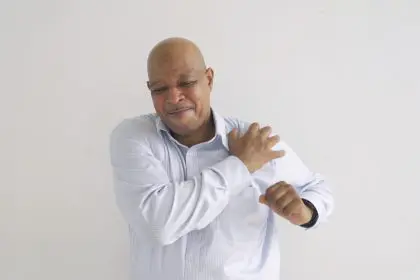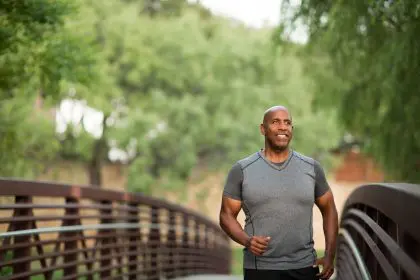Dancing does more than just bring joy – it’s a powerful full-body workout with benefits ranging from improved heart health to sharper cognitive abilities. This accessible activity fits easily into your routine regardless of age or skill level, making it an ideal choice for anyone seeking a fun path to better wellness.
Your heart says thank you
Moving to the rhythm provides impressive cardiovascular benefits. Regular dance sessions elevate your heart rate, improve circulation, and strengthen your cardiovascular system. This aerobic activity helps lower blood pressure and reduces the risk of heart disease.
The intensity varies based on your dance style choice. Ballet and contemporary dance develop long, lean muscle, while high-energy styles like hip-hop and Zumba deliver more intense cardio benefits. Even slower dances like waltz and foxtrot maintain elevated heart rates during extended sessions.
Most health organizations recommend 150 minutes of moderate activity weekly – roughly three 50-minute dance classes. This level of participation significantly reduces your risk of developing cardiovascular issues.
Dancing also improves cholesterol levels by increasing HDL (good cholesterol) while lowering LDL (bad cholesterol). The combined benefits create a protective effect for your heart that accumulates with consistent participation.
Burns calories while bringing joy
Unlike traditional exercise that often feels like a chore, dancing rarely feels like work despite its calorie-burning potential. Depending on style and intensity, dancing burns between 200-600 calories per hour.
Fast-paced styles naturally burn more – a 155-pound person dancing vigorously for an hour can burn approximately 450 calories. Even ballroom dancing at a moderate pace burns around 260 calories hourly.
This calorie expenditure happens almost unconsciously as you focus on movement and music rather than the exercise itself. The enjoyment factor makes dancing sustainable long-term compared to other fitness activities people abandon due to boredom or perceived effort.
Builds strength without weights
Dancing develops functional strength throughout your entire body. The constant movement engages multiple muscle groups simultaneously, creating balanced musculature rather than isolated strength.
The lower body receives particular attention through dance. Legs, hips, and glutes work continuously to support movement, resulting in improved tone and strength. Core muscles stabilize the body during turns, spins, and direction changes, developing essential midsection strength.
For styles requiring partner work, the upper body also develops significant strength. Leading or supporting a partner engages the arms, shoulders, and back. Even solo styles like contemporary and jazz demand arm movement that builds upper body definition.
This strength development happens through bodyweight resistance rather than external weights, reducing injury risk while creating functional, usable strength applicable to daily activities.
Enhances balance and coordination
The unique demands of dance create exceptional improvements in balance and coordination. Learning movement patterns, transitioning between steps, and maintaining proper posture all require neurological adaptations that transfer to everyday movement.
Regular dancers develop heightened proprioception – awareness of body position in space. This awareness reduces fall risk, particularly beneficial for older adults. Research indicates that dancers maintain better balance throughout aging compared to non-dancers.
The coordination benefits extend beyond physical movement to improved hand-eye coordination and spatial awareness. These skills transfer to other physical activities and daily tasks requiring precision movement.
For older adults, these balance improvements provide practical benefits. Studies show adults who dance regularly experience 50% fewer falls than non-dancers of the same age group, highlighting the practical application of these enhanced abilities.
Strengthens bones naturally
The weight-bearing nature of dance provides significant bone health benefits. The impact forces travel through the skeletal system, stimulating bone remodeling and increased density.
This makes dancing particularly valuable for women, who face higher osteoporosis risk. The combination of weight-bearing activity with rotational movements creates multidirectional forces that strengthen bones more effectively than linear exercises like running.
Regular dance participation throughout life helps maintain bone mass that naturally declines with age. Even beginning dance in later years provides protective benefits against further bone loss.
The hip and spine areas receive particular benefit, the same regions most vulnerable to osteoporotic fractures. This targeted strengthening creates protective effects where they matter most.
Sharpens your mind
Dance uniquely challenges cognitive function by combining physical activity with mental tasks. Learning choreography, remembering sequences, and executing timing all demand significant brain engagement.
This mental workout appears to create lasting cognitive benefits. Research shows older adults who dance regularly experience slower cognitive decline than non-dancers. The complex mental tasks involved in dancing may create new neural connections that build cognitive reserve.
Memory receives particular enhancement through dance training. The process of learning and recalling movement sequences strengthens the same memory pathways used in everyday life. Regular dancers demonstrate improved recall abilities in non-dance contexts as well.
The decision-making aspects of dance also provide cognitive benefits. Improvisational styles especially require split-second choices about movement, developing quick thinking abilities that transfer to daily life.
Melts away stress
The emotional benefits of dance rival its physical advantages. The combination of music, movement, and often social interaction creates powerful stress-reduction effects.
Dancing triggers endorphin release – the same chemicals responsible for “runner’s high” – producing natural mood elevation. These neurochemicals reduce stress hormone levels while creating feelings of wellbeing and even euphoria.
The focus required during dance acts as a form of moving meditation, directing attention away from stressors and into the present moment. This mindfulness component interrupts rumination cycles that contribute to anxiety and depression.
For partner or group dance styles, the social connection adds another stress-reduction layer. Positive social interactions trigger oxytocin release, further enhancing mood benefits while creating meaningful connections that buffer against stress.
Even short dance sessions produce noticeable mood improvements. Just 15-20 minutes of movement to music reduces cortisol levels and increases positive emotions, making dance an efficient stress management tool.
The accessibility of dance makes it available to almost everyone. With styles ranging from gentle movement to high-intensity performance, options exist regardless of fitness level, age, or physical limitations. This universal accessibility means nearly anyone can experience the remarkable health benefits of this enjoyable activity.
Whether joining a structured class or simply moving to favorite music at home, the cumulative benefits build over time. The combination of physical, mental, and emotional advantages makes dance a truly comprehensive health practice disguised as entertainment.
















